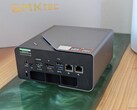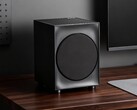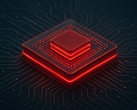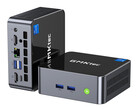Nvidia’s $4,000 DGX Spark enters the compact AI arena
Nvidia launched the DGX Spark as its first try at compact AI systems. The desktop-sized workstation is powered by the company’s GB10 Superchip and can achieve up to 1 PFLOP at FP4. Nvidia positions it as a “personal AI supercomputer” that can support researchers and developers working with large-scale generative models.
While it all sounds great on paper, the rather steep price can be a tough pill to swallow. The DGX Spark is priced at $4,000, and many enthusiasts have to carefully consider the cost-to-benefit ratio.
AMD Strix Halo challenges Nvidia on price-to-performance
Enters the challenger.
GMKtec is a maker of performance mini PCs. The company recently pitted its own EVO-X2 against the Nvidia DGX Spark and published the results. The EVO-X2 is built on AMD’s Ryzen AI Max+ 395 Strix Halo APU.
According to GMKtec, the Strix Halo outmatched the DGX Spark system in benchmarking tests using multiple open-source large language models, including Llama 3.3 70B, Qwen3 Coder, GPT-OSS 20B, and Qwen3 0.6B. The AMD system offered better performance in token generation speeds and first-response latency.
GMKtec stated that its EVO-X2 mini PC excelled at low-latency performance in real-time inference workloads due to the combination of the Ryzen chip’s CPU + GPU + NPU layout and the XDNA 2 AI engine. Nvidia’s AI supercomputer prioritized raw throughput instead.
Similar power for half the cost
The EVO-X2’s top model costs $2,199, roughly half the price of the DGX Spark. While GMKtec’s test shows Nvidia’s setup remains the hardware to beat for large-model, high-throughput operations, AMD’s Strix Halo may offer better value for AI developers and enthusiasts working with on-device AI and token-efficient workloads.

















